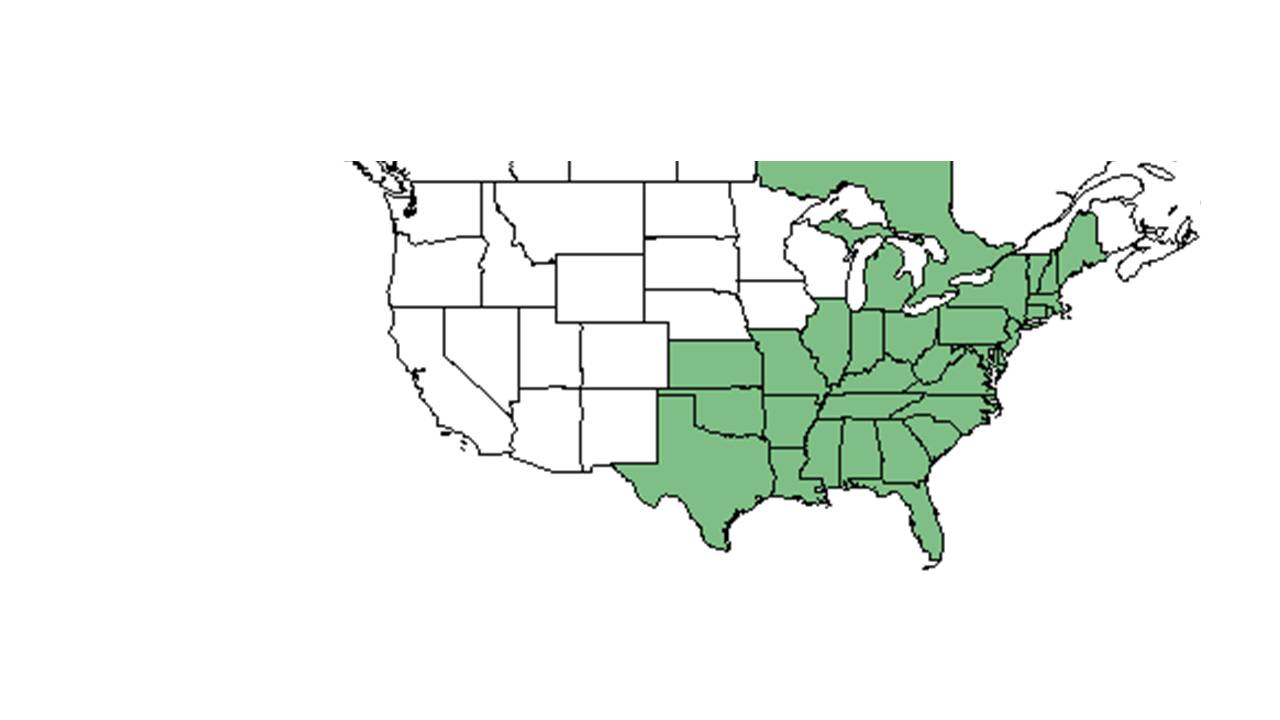Difference between revisions of "Dichanthelium sphaerocarpon"
Ruthstetler (talk | contribs) |
Ruthstetler (talk | contribs) |
||
| Line 28: | Line 28: | ||
==Ecology== | ==Ecology== | ||
===Habitat=== <!--Natural communities, human disturbed habitats, topography, hydrology, soils, light, fire regime requirements for removal of competition, etc.--> | ===Habitat=== <!--Natural communities, human disturbed habitats, topography, hydrology, soils, light, fire regime requirements for removal of competition, etc.--> | ||
| − | It is abundant in barrens habitats | + | ''Dichanthelium sphaerocarpon'' occurs in a variety of natural and disturbed communities. It is abundant in barrens habitats<ref name="Taft 2003"/>, but also occurs in pine-oak flatwoods and woodlands, mixed hardwood floodplains, pine forests, cabbage palm hammocks, and on loessial banks, the edges of open brackish marshes, and sand dunes (FSU Herbarium). It is also able to grow in disturbed areas, especially in higher light levels (FSU Herbarium). ''D. sphaerocarpon'' has been found in power line corridors, clear-cuts, roadsides, ditches, firebreaks, and old fields (FSU Herbarium). This species seems to prefer sandy or loamy soils, but can tolerate a range of moisture levels, from dry to wet (FSU Herbarium). |
| + | |||
===Phenology=== <!--Timing off flowering, fruiting, seed dispersal, and environmental triggers. Cite PanFlora website if appropriate: http://www.gilnelson.com/PanFlora/ --> | ===Phenology=== <!--Timing off flowering, fruiting, seed dispersal, and environmental triggers. Cite PanFlora website if appropriate: http://www.gilnelson.com/PanFlora/ --> | ||
Flowering and fruiting has been observed in Florida in February through November (FSU Herbarium). | Flowering and fruiting has been observed in Florida in February through November (FSU Herbarium). | ||
Revision as of 18:53, 13 July 2015
| Dichanthelium sphaerocarpon | |
|---|---|
Error creating thumbnail: Unable to save thumbnail to destination
| |
| Scientific classification | |
| Kingdom: | Plantae |
| Division: | Magnoliophyta - Flowering plants |
| Class: | Liliopsida – Monocotyledons |
| Order: | Cyperales |
| Family: | Poaceae ⁄ Gramineae |
| Genus: | Dichanthelium |
| Species: | D. sphaerocarpon |
| Binomial name | |
| Dichanthelium sphaerocarpon (Elliott) Gould | |

| |
| Natural range of Dichanthelium sphaerocarpon from USDA NRCS Plants Database. | |
Contents
Description
Common Name: roundseed panicgrass
Synonym Name: Panicum sphaerocarpon Elliott
Dichanthelium sphaerocarpon is a perennial graminoid.
Distribution
Ecology
Habitat
Dichanthelium sphaerocarpon occurs in a variety of natural and disturbed communities. It is abundant in barrens habitats[1], but also occurs in pine-oak flatwoods and woodlands, mixed hardwood floodplains, pine forests, cabbage palm hammocks, and on loessial banks, the edges of open brackish marshes, and sand dunes (FSU Herbarium). It is also able to grow in disturbed areas, especially in higher light levels (FSU Herbarium). D. sphaerocarpon has been found in power line corridors, clear-cuts, roadsides, ditches, firebreaks, and old fields (FSU Herbarium). This species seems to prefer sandy or loamy soils, but can tolerate a range of moisture levels, from dry to wet (FSU Herbarium).
Phenology
Flowering and fruiting has been observed in Florida in February through November (FSU Herbarium).
Seed dispersal
Seed bank and germination
Fire ecology
It increased from absent to 19 plots within the span of six years after an early dormant-season fire in 1989 at Gibbons Creek Barrens.[1]